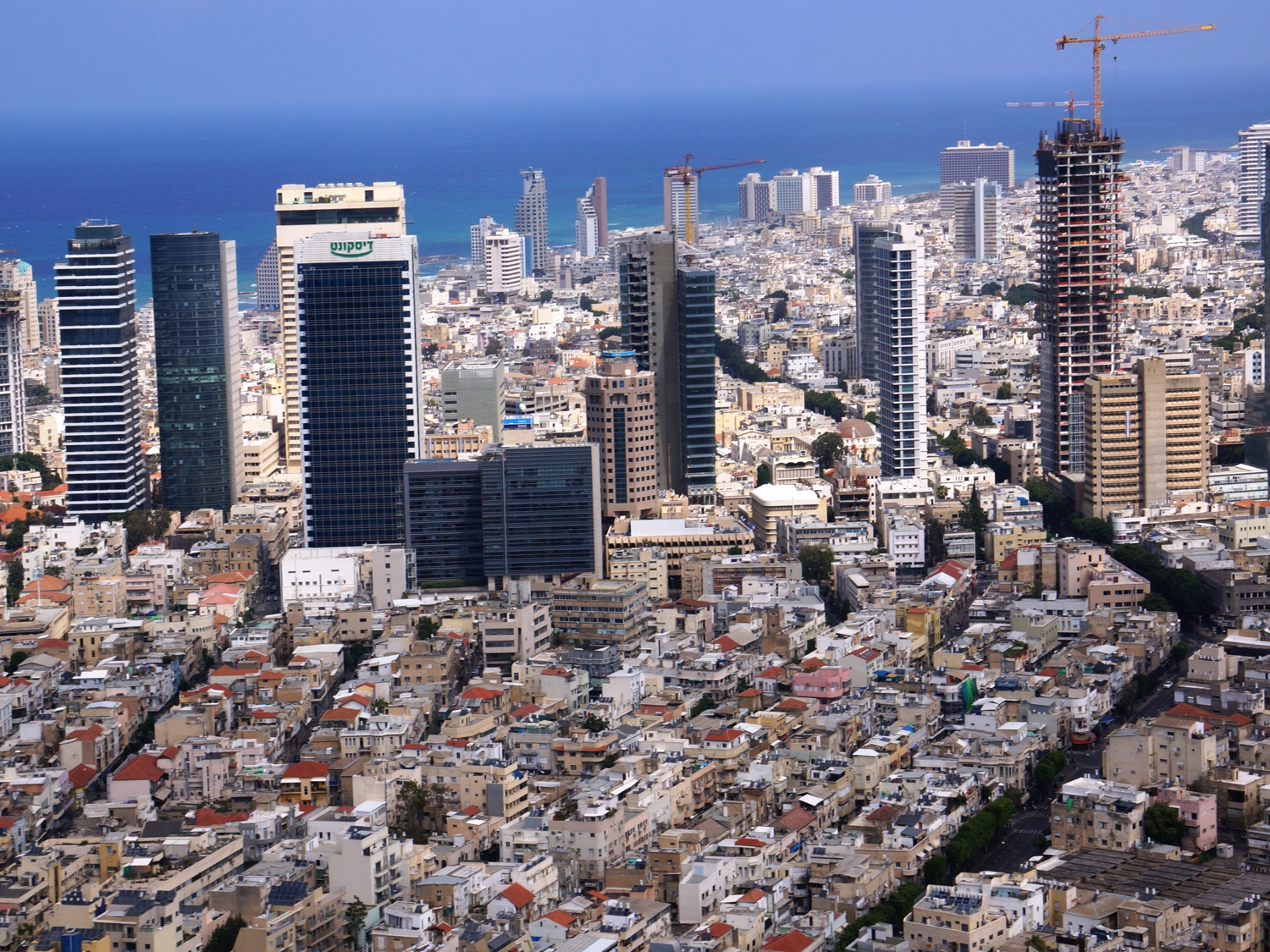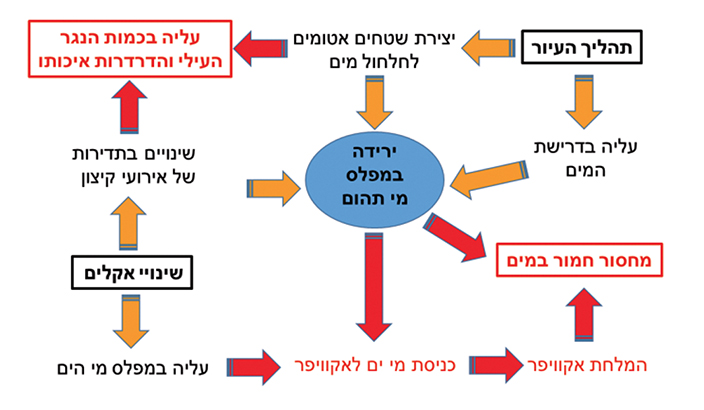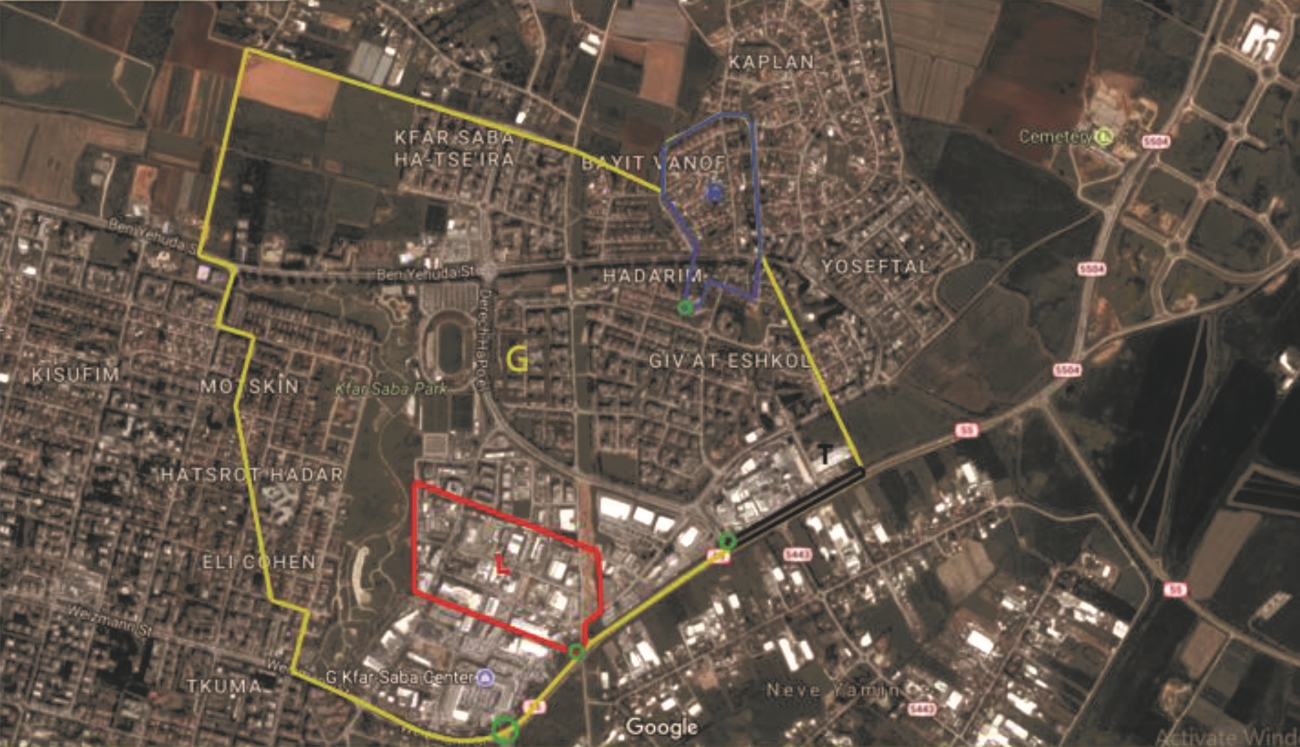
Around the world, aquifer water quality is deteriorating. The hydrology of drainage basins is dramatically influenced by the urbanization process, which leads to a relative increase in impervious surfaces. This increases the amount of stormwater runoff and decreases the amount of rainwater that can infiltrate into the groundwater. At the same time, as a result of urbanization, there is an increase in water demand and a greater need to efficiently remove runoff from the city (in order to prevent flooding).
Climate change has a significant influence of the planning of a water supply system, since it changes the amount and frequency of rainfall, and it increases the frequency of extreme climate events, such as severe rainstorms or years of drought. In addition, climate change can directly and indirectly lead to natural disasters, affect water availability and cause a rise in sea level.

Goals and Objectives of the Development of the Vision of Water Sensitive Cities in Israel
The goal of this sub-project is to develop a comprehensive vision for water sensitive cities in Israel that considers scientific, economic and social aspects. The research is based on a meta-analysis of current knowledge relating to our goal, for example: possible influences of global warming; population increase and water demand; rates of urbanization and the characteristics of future urban spaces; and stormwater harvesting for reuse or for recharge to the aquifer. The research also investigates public acceptance of a water sensitive city, as well as barriers to introducing alternative urban water source, as well as possible institutional incentives.
To read and download the research report (Hebrew):
To download and read the full research booklet
“From a Nuisance to a Resource 2017” (Hebrew)
Project 1.2 – Characterization of urban stormwater in Israel
Throughout the world, including Israel, urban runoff is considered to be a nuisance rather than a potential water source, and as such, stormwater is transported out of the cities, and eventually flows into streams or the ocean. Many researchers have shown that urban runoff may contain a wide spectrum of both organic and inorganic pollutants, heavy metals and pathogenic bacteria. The runoff is then likely to pollute the bodies of water into which the stormwater flows. The “water sensitive cities” approach that has recently been developed in Australia sees this stormwater runoff as a potential resource that can be an alternative or additional urban water source, for a range of uses within the city (i.e. close to the place where the rain falls). An attempt to adapt this approach in Israel is the motivation of this research.

The main goal of the research is to examine and to characterize the quantity and quality of urban runoff from three different land uses (road, light industry and residential), using Kfar -Saba as a case study, where we are able to isolate and monitor each sub-catchment and identify its land use. The results can then be used as input data in planning biofilters and other types of systems that are designed to treat the stormwater.
The main catchment basin, located in eastern Kfar-Saba, has an area of 2,785 dunam and drains entirely into an open canal with a single exit point. This catchment includes 32 secondary catchment basins, of which we are monitoring three, with the following characteristics:
G – Main drainage basin that drains to a main drainage canal, and encompasses the entire basin, 2,785 dunam.
R – Residential area, including roads, sidewalks, gardens, buildings, etc., 173 dunam.
L– Commercial and light industrial area , including auto repair shops, workshops, stores, etc., 192 dunam.
T– Intracity highway 55, a road with heavy vehicular traffic all hours of the day, 5.8 dunam.
To read and download the research report (Hebrew):
To download and read the full research booklet
“From a Nuisance to a Resource 2017” (Hebrew)

